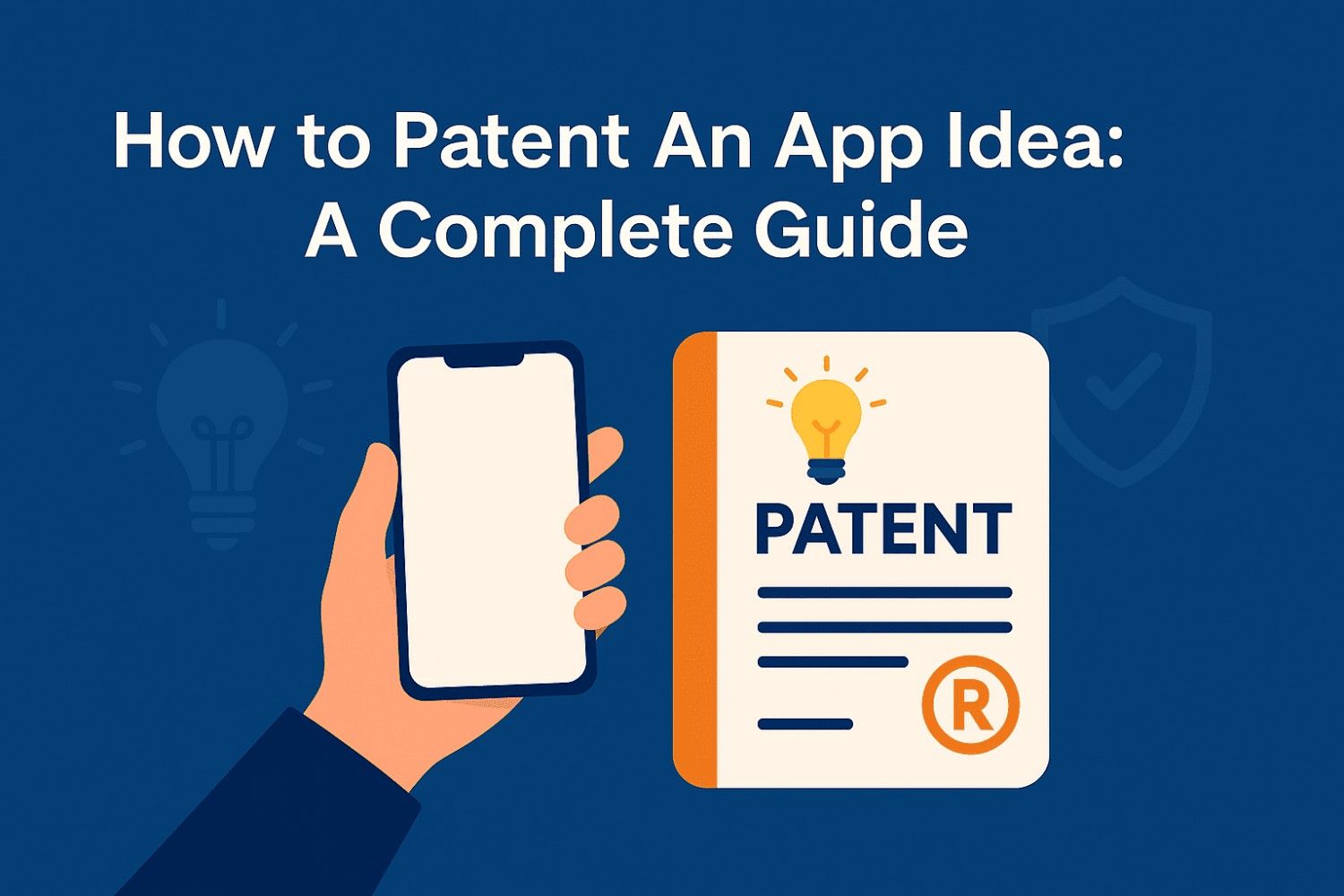Let’s start with a small confession — back in 2017, we had an idea for an app that would let people rate their coworkers anonymously. Think “Tinder meets LinkedIn” with a sprinkle of passive aggression. Naturally, the idea never saw the light of day (because HR departments everywhere would’ve declared war), but it did teach us a critical lesson: a good app idea is only as valuable as the protection behind it.
Welcome to the wild world of patenting an app idea — where innovation meets bureaucracy, and your sanity is politely asked to wait in the lobby.
If you’re sitting on the Next Big Thing™, and your whiteboard is starting to look like a conspiracy theory diagram — this guide is for you.
Step 1: Is Your App Even Patentable? (No, “Uber for Hamsters” Doesn’t Count)
We get it. Your app can change the world. But before you sprint to the patent office, let’s do a quick vibe check:
Your app idea can be patented if:
-
It offers a novel process, algorithm, or functionality.
-
It solves a real problem in a non-obvious way.
-
It’s not just a basic wireframe with “AI” slapped on every button.
If your app is simply a copy-paste of another app with a darker UI or more emojis… well, your patent attorney’s gonna have a good laugh (right before they send you the bill).
Step 2: Talk to a Patent Attorney (Yes, They’re Expensive — and Worth Every Rupee)
This is the part where we tell you to get professional help — and no, not the emotional kind (though that might also help).
Patent laws are a minefield of legalese, where one misworded phrase can turn your genius into public domain mush.
A qualified patent attorney will:
-
Help you conduct a prior art search.
-
Draft a rock-solid patent application.
-
Make sure your idea isn’t accidentally patented by someone named Bob in Wisconsin in 1998.
If you’re already working with a Mobile App Development Company, ask them for attorney referrals. The good ones know someone — the great ones have them on speed dial.
Step 3: File a Provisional Patent (A.K.A. Buying Time — Legally)
If your app idea is still in the oven (read: not fully baked), filing a provisional patent is your best bet.
Think of this as putting a “reserved” sign on your invention. You’ll get:
-
12 months of legal protection,
-
A chance to test the market,
-
And enough time to fine-tune your MVP without panicking every time someone mentions Silicon Valley.
Bonus? It’s cheaper than a full utility patent and less paperwork-y.
Step 4: Build Your MVP with a Trustworthy Mobile App Development Company
You didn’t think we’d miss the chance to talk about this, did you?
Here’s a not-so-secret secret: the right development partner can make or break your app’s success — and protectability.
Why? Because:
-
They’ll help you implement your unique features securely.
-
They’ll sign NDAs (we hope).
-
And they know how to document every ounce of innovation that goes into your product — which your attorney will later thank you for.
Pro tip: Don’t just hire anyone who has “developer” in their Instagram bio. Vet thoroughly. Ask for case studies. If their last app was “Flappy Bird Clone #47,” run.
Step 5: File the Non-Provisional (Utility) Patent — For Real This Time
Once your MVP is alive and kicking (or at least crawling), it’s time to go all in.
A non-provisional patent is the real deal — what gives you legal ownership of your invention for 20 years. This is the document that says, “Hands off, world. This brainchild is mine.”
It takes time (think 1-3 years), effort (lawyers again), and money (sorry), but it’s the final frontier of IP protection.
What a Patent Doesn’t Do (Cue the Reality Check)
Let’s bust a few myths, shall we?
-
A patent won’t stop someone from stealing your idea — it just gives you the right to sue them (and spend months in court).
-
It won’t magically attract investors — but it helps.
-
It doesn’t replace good ol’ product-market fit.
Patents are protection, not promotion. Build something amazing — then use your patent like a shield, not a sword.
Final Thoughts (And A Slightly Biased Recommendation)
At Kanhasoft, we’ve helped startups go from napkin sketch to app store stardom. And yes, we’ve seen both sides of the patent coin — the joy of securing one and the regret of skipping it.
So here’s our take: If your app idea is truly innovative and technically complex, patenting is worth it. But if your idea can be replicated in a weekend hackathon, maybe focus more on execution, branding, and speed.
And if you need a Mobile App Development Company that gets the technical and legal nuances? Well, you’re already in the right place.
FAQs: Because You’re Probably Wondering…
Q1. Can I patent just the idea of an app?
A: Nope. You can’t patent ideas — only implementations. You need a detailed description of how it works, not just a napkin sketch with “AI-powered marketplace for alpacas.”
Q2. How much does it cost to patent an app idea?
A: Expect anywhere from ₹1.5 to ₹5 lakhs in India (and way more abroad). Provisional patents are cheaper but temporary.
Q3. How long does it take to get a patent?
A: Usually 2–3 years. Yes, we know — time moves differently in Patentland.
Q4. Should I file a patent before or after developing the app?
A: Ideally, file a provisional patent before development and the non-provisional after you’ve built your MVP.
Q5. What’s the role of a Mobile App Development Company in this process?
A: Apart from building the actual product, they help with documentation, technical write-ups, NDAs, and keeping your IP safe during the build process.
